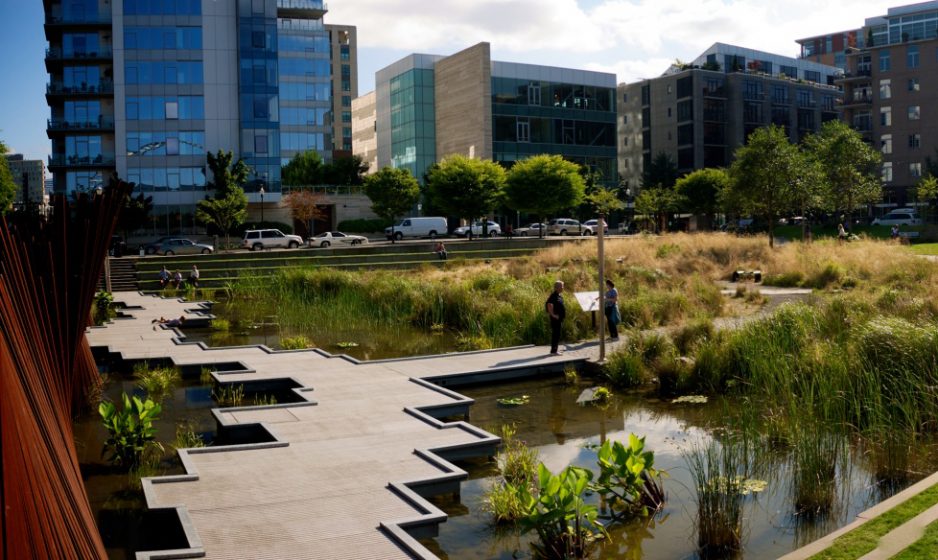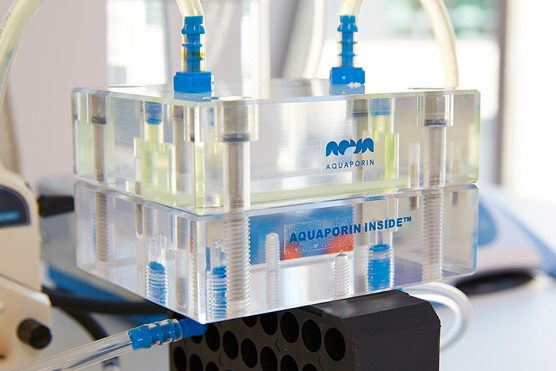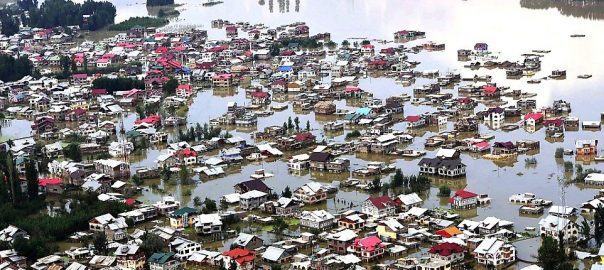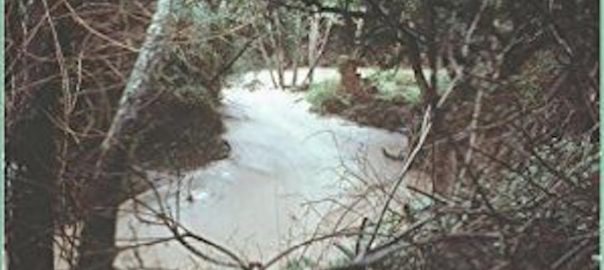Predicting the future is impossible, but climate science is beginning to paint a concerning image of a future troubled by climate change. My last feature post outlined the challenges climate change poses to our cities and aging infrastructure, but climate change also endangers our health and well-being. Climate change does not just threaten isolated regions of the globe. We are experiencing firsthand the broad negative impacts of the droughts in California, flooding in Miami, and heat waves in the Midwest. According to the research, this is only the beginning. If we want to ensure healthy, happy, and prosperous communities in the future, we have to work now to mitigate the impacts of climate change and strengthen our cities against its inevitable health and infrastructure threats.
The Challenge
The 2015 Lancet Commission on Health and Climate Change has clearly identified the health risks of a warming globe, and the projections are very concerning. No region will be spared these health and physical impacts, but cities will have particular challenges. The direct health impacts of climate change include higher rates of cardiovascular stress and asthma due to greater amounts of air pollution and allergens, increased heat stroke and mortality rates from heat waves, wider spread of bacterial and viral infections, greater risk of serious injury or death from extreme weather, and anxiety and post-traumatic stress issues stemming from these extreme events. Beyond these direct health impacts, there is great concern that disruptions in our food system could cause malnutrition in many communities [1]. Climate change will also alter ecosystems that we depend on for basic services such as clean drinking water, fertile soils for agriculture, and biodiversity to manage pestilence. Such disturbances will strain social and economic systems, intensifying violence and emigration in resource-stressed areas. For these reasons, the U.S. Department of Defense has identified climate change as a “present security threat” [2].

Although the magnitude and nature of health impacts are hard to predict with precision, many anticipated threats have already become real-world impacts after only 1.5°F of warming. These impacts include the increased rate of melting of glaciers, disruptions to global weather patterns, increased intensity of storm events, and regional droughts. Climate change significantly increases the probability of extreme weather, and with dangerous health consequences.
While the poorest and most vulnerable communities might suffer first, the interconnected nature of climate systems, ecosystems, and global society means that none will be immune. Indeed, on the basis of current emission trajectories, temperature rises in the next 50 years may be incompatible with our current conception of an economically interdependent global community.
The Opportunity
While these projections are troubling, we have tools and strategies to mitigate the majority of these challenges. Cities must transition to communities that support and promote lifestyles that are healthy for both the individual and the planet. Leading cities around the world are already initiating this transition by developing a highly energy efficient building stock, improving active transportation, and increasing access to green spaces and green infrastructure. Such measures improve adaptive capacity while also reducing urban pollution, greenhouse gas emissions, and rates of cardiovascular disease, cancer, obesity, diabetes, mental illness, and respiratory disease. These are valuable and necessary steps, but they fail to eliminate the root issues of climate change—strained and diminished ecosystems, and polluting, resource-hungry infrastructure and industrial processes. We need to look to nature if we want to create truly resilient, healthy communities.
By leveraging the innovation found in natural systems and developing new bioinspired technologies, we can maximize our resources to support human prosperity and health without damaging the ecosystems on which we depend. These benefits include reduced stress and anxiety by reconnecting people to nature, improved resiliency by restoring ecosystems, improved resource management from integrating green infrastructure into cities, and radically improved resource utilization by innovative, bioinspired technologies.
To counteract some of the direct health effects of climate change, designers can reconnect the built environment with nature through biophilic design. Humans have evolved alongside nature and its systems. As a result, the human mind and body function with improved efficiency and performance when natural elements are present. Fortifying our communities with strategic applications of nature and natural patterns—leveraging our multi-sensory relationship with nature, as well as our affinity for physical and spatial complexity and order—will contribute to the healthful vibrancy of city and space. Green urban design can help reduce obesity and improve mental health by encouraging increased physical activity, social connectivity, and connection to nature. Increasing neighborhood green spaces reduces both morbidity and mortality from many cardiovascular and respiratory diseases and stress-related illnesses [3]. In addition to optimizing our productivity, healing time, learning functions, and social cohesion, biophilic design also serves as the perfect partnering mechanism for supporting and restoring local ecosystems. Biophilic design calls for measures like frequent contact with natural systems and green infrastructure, which in turn increase the resilience of natural and human systems to climate change impacts and disasters.

Utilizing ecosystem services, biodiversity, and sustainable resource management as an adaptation strategy to enhance natural resilience and reduce vulnerability can act as a defense against climatic and non-climatic events. For example, restoring wetlands can protect coastal settlements and conserving forests can ensure a clean domestic water supply. This type of green infrastructure is considered to be more cost effective than many hard-engineered solutions, and reconnects people to natural systems. It can be combined with engineered infrastructure or other technological approaches, especially those that have been inspired by nature. These interventions can be effective in reducing certain climate change vulnerabilities, as they reduce disaster risk and enable improvements in livelihoods and food security. Restored ecosystems combat both the direct and indirect health impacts of climate change.

Besides directly working with ecosystems, we can also emulate ecosystem functioning in our engineered systems. At the city scale, ecosystem-based adaptation also has the potential to yield benefits for highly urbanized areas through the development of green infrastructure and system-scale regulations. In many cases, enhancement of urban ecosystems provides multiple co-benefits for health such as clean air, temperature regulation, and biophilia-based health improvements. These ecologically based strategies can further create synergies between adaptation and climate change mitigating measures by assisting in carbon sequestration and enhancing various ecosystem services considered beneficial for human health. For example, trees are considered to be particularly efficient at reducing concentrations of pollutants. Tree canopies also have a higher albedo than other hard surfaces and can work to reduce the urban heat island effect, lowering heat mortality by 40–99 percent [1]. While they result in improved public health and community resilience, many of these measures will also act to mitigate climate change.
In order for our buildings, cities, and surrounding ecosystems to become regeneratively interdependent, we must reform our industrial processes and modern systems to operate sustainably within these systems while still remaining cost competitive. Bioinspired innovation provides insights on how to redesign these systems by mimicking the processes, forms, and systems of nature. Throughout history we have looked to nature to develop new innovations, and with today’s deepening knowledge of how biological systems work, the possibilities are expanding on a daily basis. For example, researchers are working to develop strategies found in photosynthesis to transform how we capture and store the power of sunlight, technology developers are using water channel proteins (aquaporins) to advance low energy desalination technology, and designers are learning about the adaptive capacity of forests to improve our community’s resilience. All of these approaches to integrating with natural systems, be it through biophilic design, ecosystem restoration, urban ecological planning, or bioinspired innovation, offer holistic solutions to mitigation, resilience, and adaptation to climate change.

A Call to Action
Tackling climate change could be the greatest opportunity to create a healthy resilient sustainable community for future generations. However daunting this sounds, if we integrate with natural systems, we will not only support human health and productivity, but also increase community resiliency, reduce government spending, reduce resource consumption, and have greater resource equity. While more research is needed to clearly articulate the health and secondary impacts of climate change, if we wait too long, we won’t be able to mitigate the worst effects.
To this end, Terrapin Bright Green is working to support the creation of a regenerative future by working with ecologists, biologists, material scientists, neuroscientists, and environmental psychologists to develop tools and processes that learn from nature. This includes our biophilic design strategies, our Framework for an Ecological Built Environment (Phoebe), and our bioinspiration innovation program. We encourage you to delve into these life-centered disciplines to think more holistically about how we can co-create a future together.
Chris Garvin
New York City
This essay is posted with permission from Terrapin Bright Green and originally appeared on www.terrapinbrightgreen.com/blog/ on August 11, 2015.
References
- Watts, et al., “Health and climate change: policy responses to protect public health,” The Lancet, 23 June, 2015. http://www.thelancet.com/journals/lancet/article/PIIS0140-6736(15)61043-1/abstract
- “National Security Implications of Climate-Related Risks and a Changing Climate,” United States Department of Defense, 23 July, 2015. http://www.defense.gov/pubs/150724-Congressional-Report-on-National-Implications-of-Climate-Change.pdf?source=GovDelivery
- Browning, W. et al., The Economics of Biophilia: Why Designing with Nature in Mind Make Financial Sense, Terrapin Bright Green LLC, 2012. http://www.terrapinbrightgreen.com/report/economics-of-biophilia/
*Header and feature image copyright Linh Nguyen/unsplash.












Add a Comment
Join our conversation